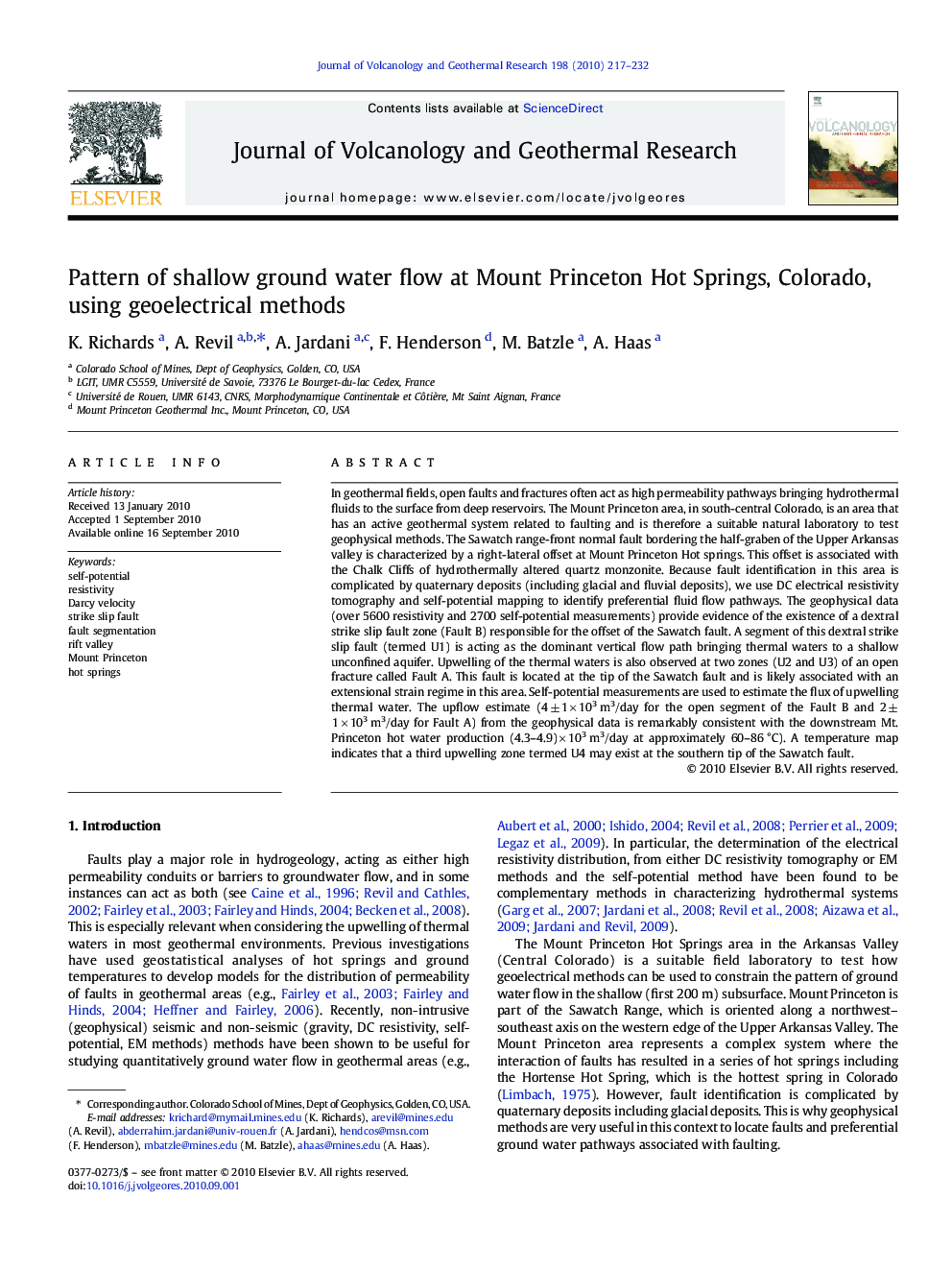| Article ID | Journal | Published Year | Pages | File Type |
|---|---|---|---|---|
| 4712901 | Journal of Volcanology and Geothermal Research | 2010 | 16 Pages |
In geothermal fields, open faults and fractures often act as high permeability pathways bringing hydrothermal fluids to the surface from deep reservoirs. The Mount Princeton area, in south-central Colorado, is an area that has an active geothermal system related to faulting and is therefore a suitable natural laboratory to test geophysical methods. The Sawatch range-front normal fault bordering the half-graben of the Upper Arkansas valley is characterized by a right-lateral offset at Mount Princeton Hot springs. This offset is associated with the Chalk Cliffs of hydrothermally altered quartz monzonite. Because fault identification in this area is complicated by quaternary deposits (including glacial and fluvial deposits), we use DC electrical resistivity tomography and self-potential mapping to identify preferential fluid flow pathways. The geophysical data (over 5600 resistivity and 2700 self-potential measurements) provide evidence of the existence of a dextral strike slip fault zone (Fault B) responsible for the offset of the Sawatch fault. A segment of this dextral strike slip fault (termed U1) is acting as the dominant vertical flow path bringing thermal waters to a shallow unconfined aquifer. Upwelling of the thermal waters is also observed at two zones (U2 and U3) of an open fracture called Fault A. This fault is located at the tip of the Sawatch fault and is likely associated with an extensional strain regime in this area. Self-potential measurements are used to estimate the flux of upwelling thermal water. The upflow estimate (4 ± 1 × 103 m3/day for the open segment of the Fault B and 2 ± 1 × 103 m3/day for Fault A) from the geophysical data is remarkably consistent with the downstream Mt. Princeton hot water production (4.3–4.9) × 103 m3/day at approximately 60–86 °C). A temperature map indicates that a third upwelling zone termed U4 may exist at the southern tip of the Sawatch fault.
Research Highlights► Self-potential and DC resistivity tomography reveal the pattern of a complex fault system. ► Self-potential can be used to assess the flow rate along a tectonic fault. ► The pattern of geothermal flow has been elucidated at Mount Princeton Hot Springs in Central Colorado. ► In situ temperature and surface self-potential measurements are complementary sources of information to reveal the pattern of ground water flow in geothermal systems.
